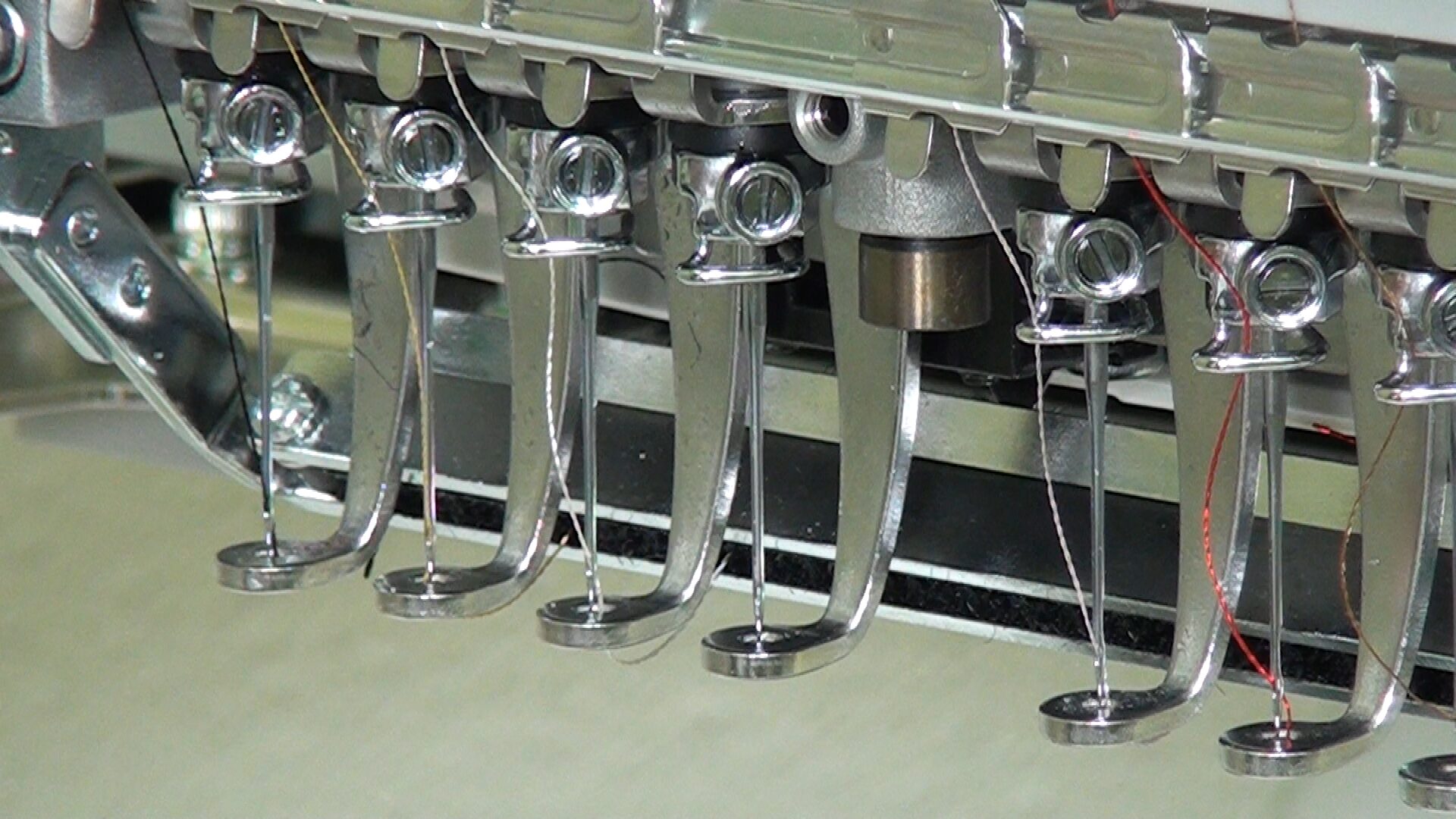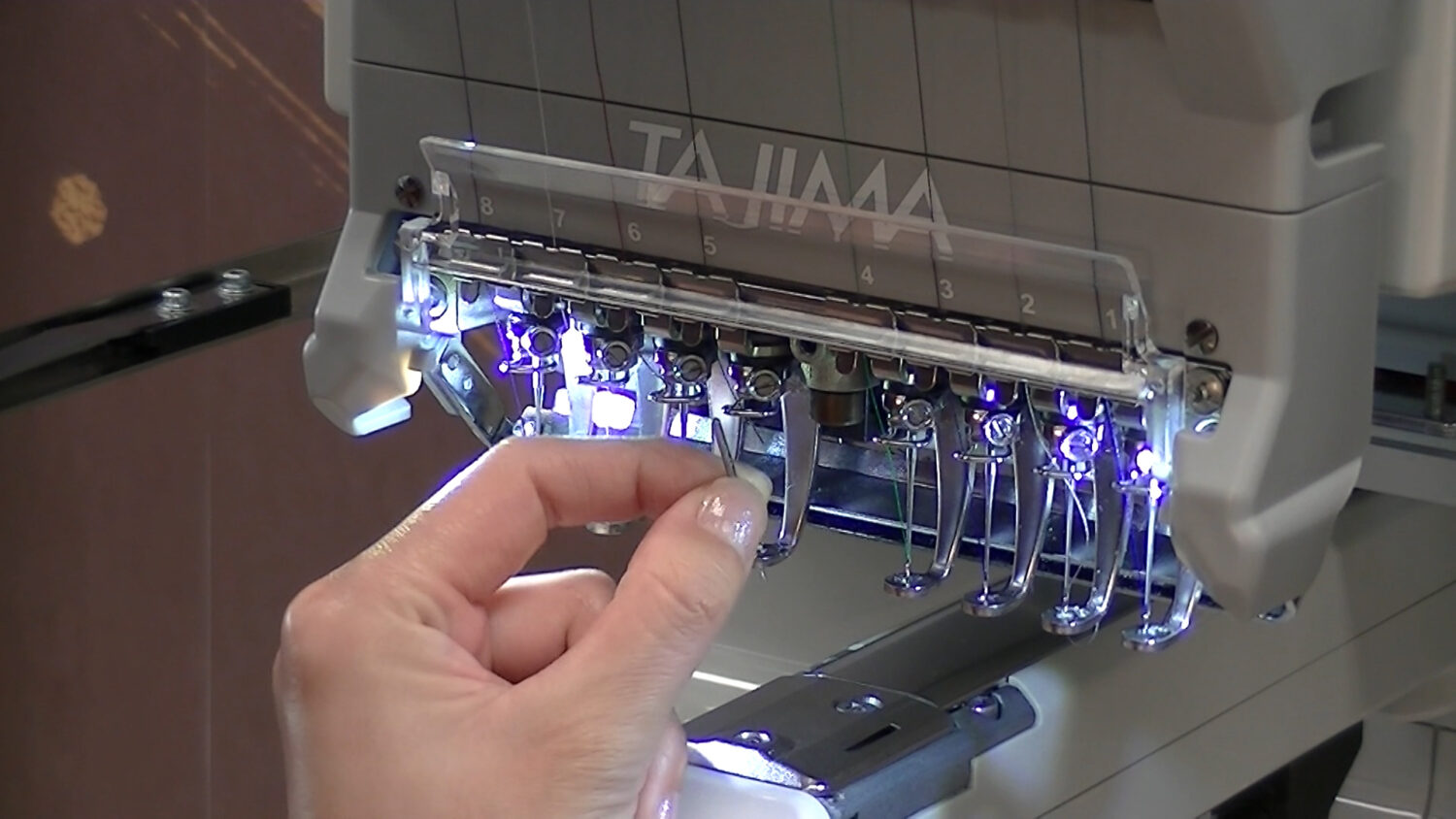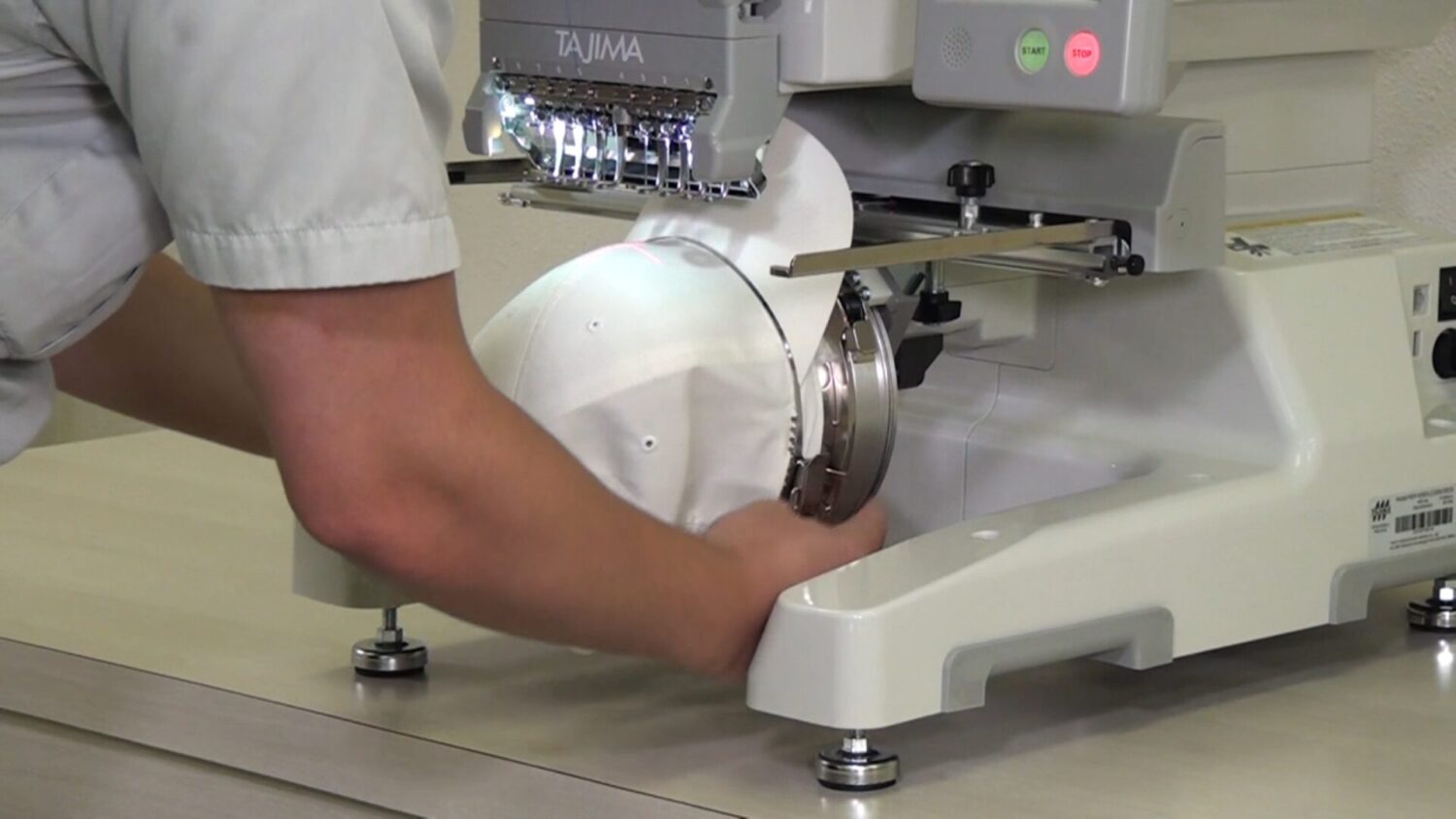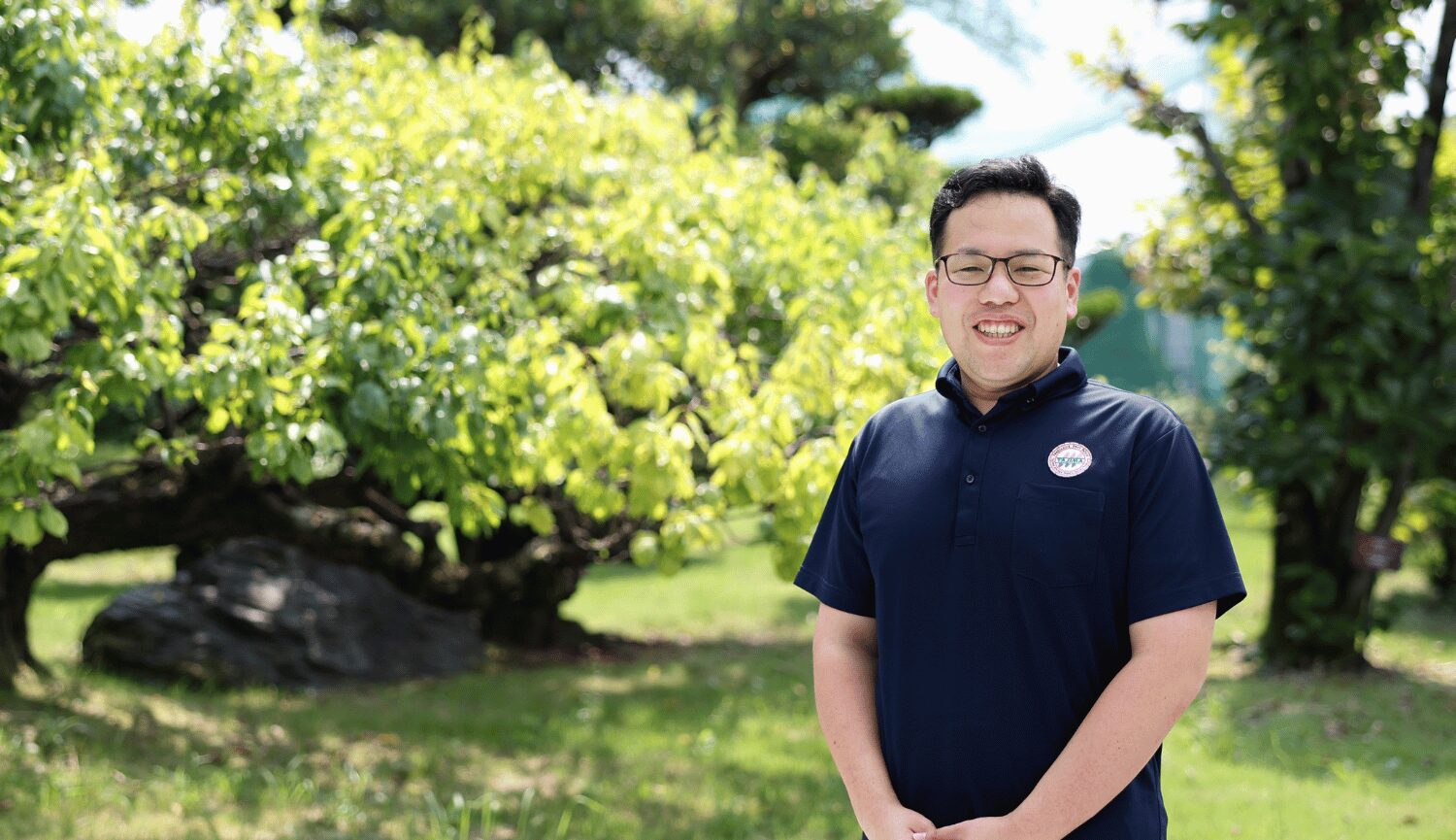Here are what you need to know about needles to get a beautiful embroidery result.
Create more beautiful embroideries with the right combination of fabric, thread, and needle.
INDEX
About Embroidery Needles
Sewing machine needle size is indicated by a number; the larger the number, the thicker the needle.
The standard needle for Tajima embroidery machines is ORGAN NEEDLE “DB×K5Z1” or Groz-Beckert “DB×K5RG”, size 11. There are two types of needle size: European needle size and American needle size, and American needle size 11 is represented by European needle size 75.
The appropriate sewing machine needle size depends on the fabric. Be careful not to embroider with needles that do not match the fabric, as this may cause problems such as needle breakage.
Tajima’s standard needle has a large needle hole that can be used for a variety of purposes, including thin, thick, and knit fabrics!
*Needles that can be used with Tajima’s embroidery machines are needles that were developed exclusively for use with main-stitching embroidery machines. Please note that needles for home sewing machines cannot be used.
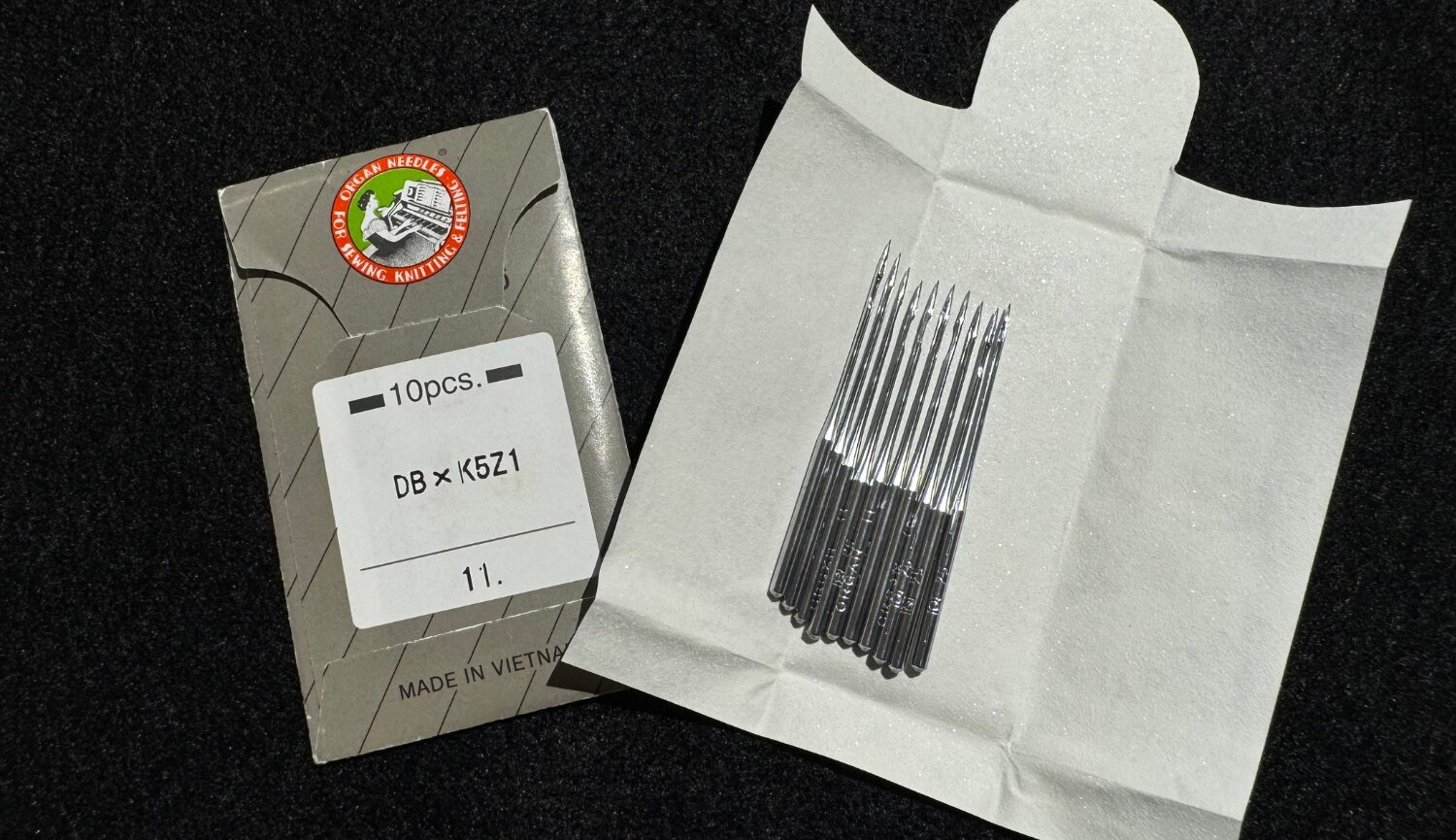
Fabric, Thread and Needle Combination
The following shows some representative examples of fabric, thread, and needle combinations to improve the quality of the finished embroidery. Please follow these recommendations.
| Fabric | Upper thread | Needle size (*2) | |
|---|---|---|---|
| Material | Size (*1) | ||
| Thin fabrics such as georgette and organdy |
Polyester, rayon | 75d/2 or 120d/2 | 65/9 to 75/11 |
| Felt, knitted fabrics such as T-shirts |
65/9 to 80/12 | ||
| Caps, thick fabrics such as denim |
120d/2 | 75/11 to 90/14 | |
(*1)Indicated in denier format. The higher the number, the thicker the thread. The lower the number, the thinner the
thread.
(*2)The lower the number, the finer the needle. The higher the number, the thicker the needle.
*Fine needles such as No. 9 should be used for thin fabrics.
*To prevent the breakage of the needle or the thread when embroidering thick fabrics, such as caps
and denim products, use thick needles such as No. 12 or 14.
*Switch to finer needles if the holes left after embroidery tend to stand out.
How to Replace the Needles
How to replace the needles.
If you have any trouble changing needles, please check out our YouTube video!
When the Needle Should be Replaced
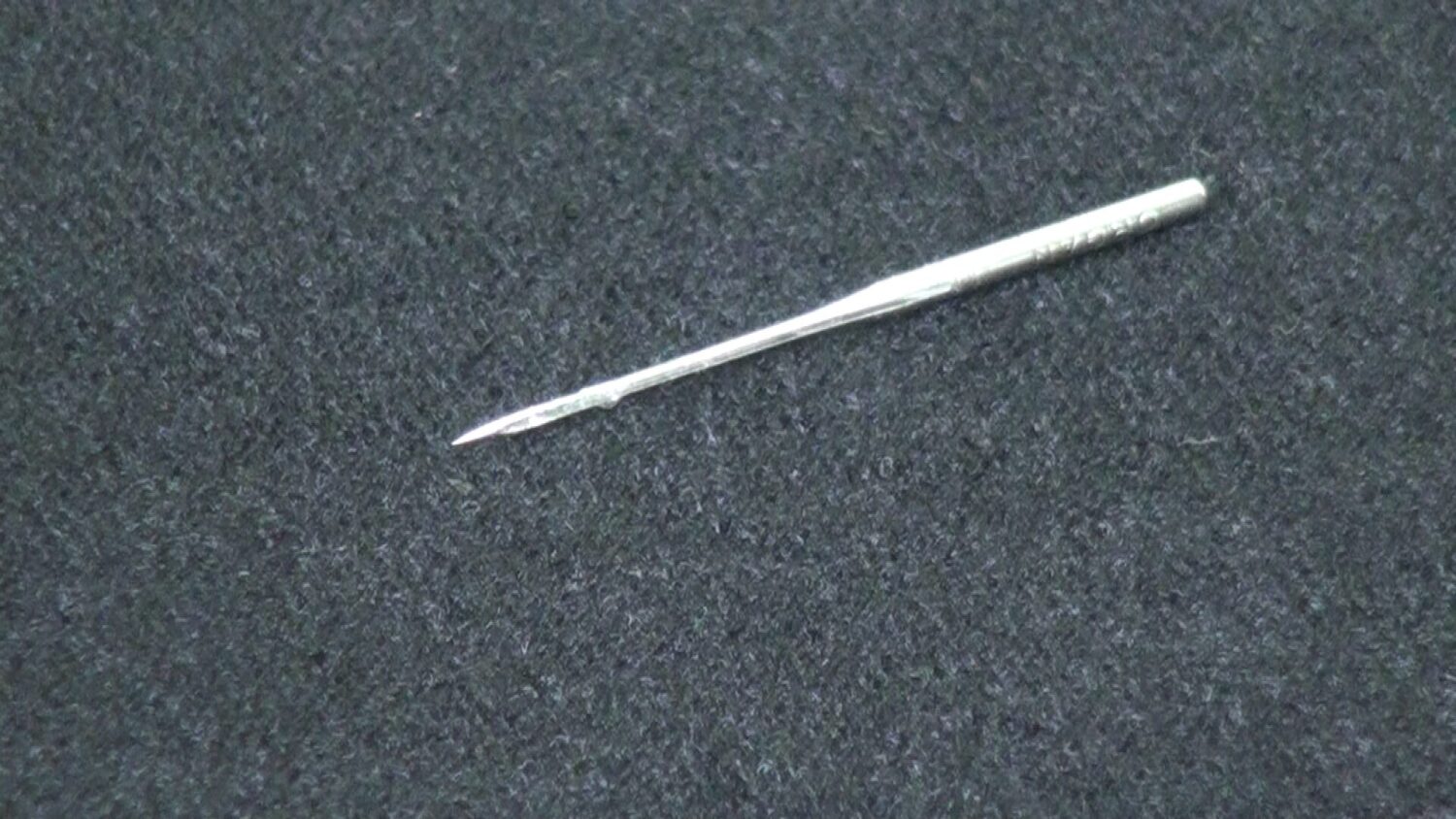
Replacement point (1)
If the needle is dirty, replace it with a new one.
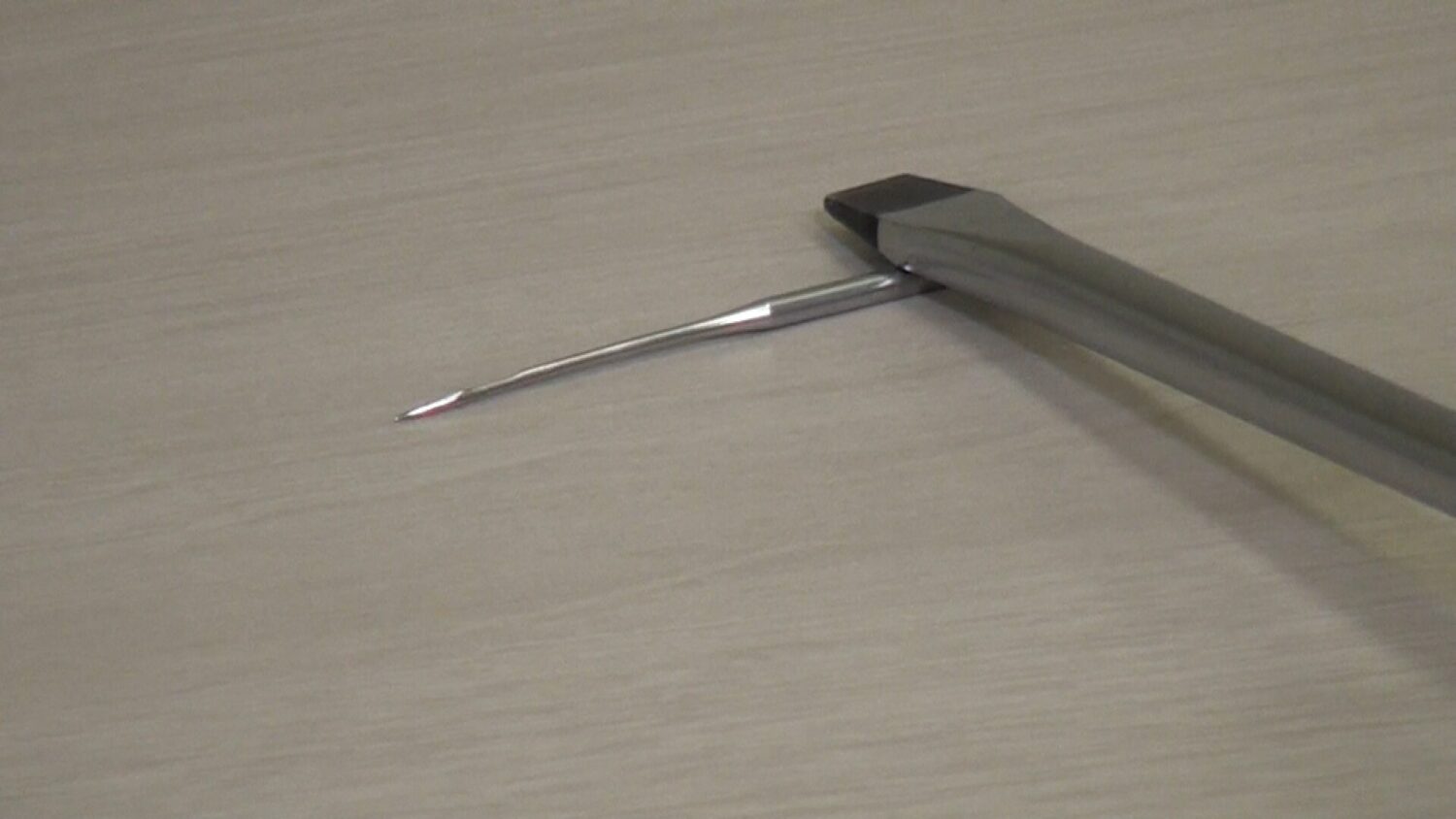
Replacement point (2)
If the needle is bent, replace it with a new one. It is easy to check if it is bent by rolling it on a flat table with a flathead screwdriver
